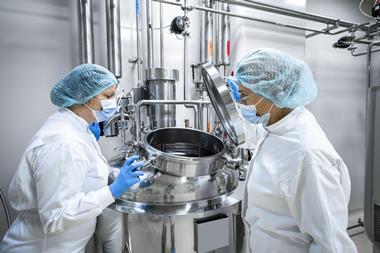Pharmaceutical supply chains are international, complex and opaque. Is there a better way?
Shortages of important drugs like antibiotics and cancer treatments in recent years, as well as disruptions from the Covid-19 pandemic have brought increased attention to the global supply chains involved.
It’s not a particularly easy subject to grasp, because there are so many individual cases and because the information available is often incomplete. This situation is no accident. For one thing, many companies don’t want to go into public detail about their supply chains and manufacturing partners. Sometimes intermediates get sent between different countries for individual processes along the way, which can reset their country-of-origin designation for the next step. And in the commodity markets for generic medicines, just figuring out the actual number of primary suppliers can take some work, since so many resellers exist.

But there are some recurring themes: China is generally the source for a large share of active pharmaceutical ingredients (APIs), followed in most cases by India. At the other end of those transactions, the US is generally the largest and most lucrative market, followed by Europe. Now, you can find charts that suggest that the biggest share of APIs used in the US actually have US sources, but that only happens when you rank things by dollar value, where expensive biologics skew the numbers. If you look at the landscape in terms of numbers of APIs, there’s no doubt that both the US and Europe are extremely dependent on low-cost chemical manufacturing in China and India. The Indian government has itself expressed worries about how dependent its industry is on Chinese starting materials!
On-shoring drug production will raise prices, and it will especially raise them on the generic drugs whose price competition is fiercest
This is especially true for generic drugs. If there’s a single example among the common painkillers, antibiotics, antihistamines or blood pressure medications that does not have China and India at the top of its supplier list, I’m certainly not aware of it. This has led politicians and regulators to wonder about just how robust this situation is, and you hear occasional calls for the US and other countries to on-shore manufacturing in the interest of economic stability and even national security. The current shortages of generic chemotherapy medicines and others have given these ideas more impetus than ever. Do they make sense?
As usual with such a question, the answer will depend on what you’re trying to accomplish, how long you might have to get it done and how much money you’re willing to spend. That last part is especially pertinent, since that’s why everyone buys from the Chinese and Indian suppliers to start with: they generally have the lowest prices in the world. So the first thing that should be clear to anyone seriously considering on-shoring drug production is that it will raise prices, and it will especially raise them on the generic drugs whose price competition is fiercest to start with.
An absolutely bulletproof supply of major drugs within the US or Europe could mean reordering the whole fine chemicals landscape
This is not a popular answer, and it inevitably leads to questions about why the Chinese and Indian drugs are so much cheaper. Their high volume of production is a real advantage, of course, and lower labour costs factor in as well. We also can’t ignore the lower regulatory and environmental costs in many parts of the world. If you want to make these drugs in the UK, Italy, Louisiana or the like, you’re going to be looking at higher operating costs – and that’s without even considering the huge capital investment of building the plants. There’s another matter to think about: these plants will be using all sorts of solvents and reagents to make their drugs, and guess where many of those are sourced from? An absolutely bulletproof supply of major APIs within the US or Europe could mean reordering the whole fine chemicals landscape.
The middle ground might be to list the most crucial drugs that simultaneously have the least domestic manufacturing – no easy task, given the number of different views about what’s more crucial and why. Then you could start prioritising which ones you’d want to on-shore first. And start figuring out where to put the plants. And start the environmental impact assessments for them and all the local regulatory approvals. And examine all the other parts of the synthesis to make sure that you’re still not just as dependent on foreign supply once you’re finished. It’s enough to make you yearn for a world of free trade, where all nations can exploit their comparative advantages, but that’s not always where we live, is it?

















No comments yet